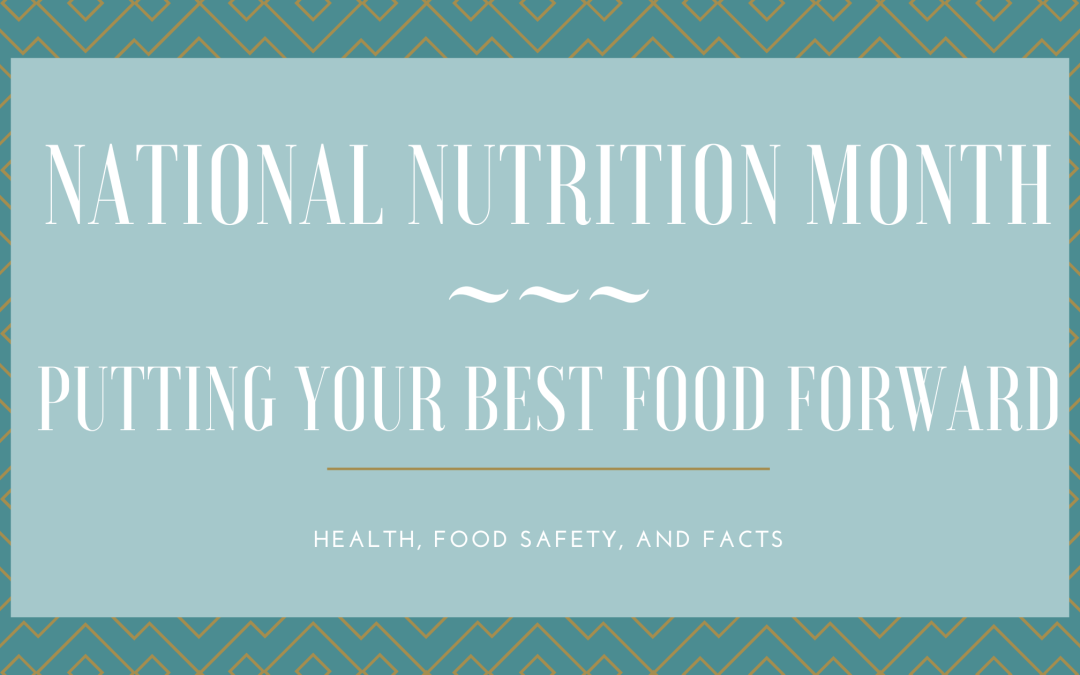We all have different bodies, goals to being healthy, heredities and tastebuds, and for those reasons there is not one particular approach to better nutrition. During March, National Nutrition Month, let’s start with small changes and finding alternatives to foods that you like but are unhealthy for you. Instead of thinking “good” or “bad” foods, think of nutrient-rich foods, and focus on variety.
Let’s start with a visual of a pie chart of your plate. It should contain half fruits and veggies, one-fourth lean protein and one-fourth whole grains.
Fruits and Vegetables
Try a mix of colors to get a variety of nutrients as well as flavors: red strawberries and tomatoes, bright yellow sweet corn, orange carrots, blueberries, green kiwi and avocado. Also, eat what’s in season, because it will be at its freshest.
Protein
Meat– When buying chicken, choose skinless white meat- no thighs or drumsticks – and no hot wings. If you’re buying fresh beef, look for words like “loin” and “round,” that indicate the meat is lean. Sirloin and tenderloin steaks, eye of round roast, and round steak are all lean.
Fish- Very lean white fish include cod, haddock, grouper, halibut, tilapia and bass. While they contain fewer calories, they also provide only about 10-25% of the omega-3 fats, so it’s recommended that you also eat a fattier fish, like salmon, now, and again.
Fish has numerous other health benefits including improved mental health and vision in seniors, aiding in autoimmune disorders, relieving asthma in children and, in some cases, improving sleep quality.
Dry beans, peas, and lentils – Each provides 8 grams of protein per 1/2-cup cooked serving. In 26 studies of just over 1,000 people, those who ate an average of 2/3 cup of any one of these proteins daily for at least three weeks experienced a reduction in their bad cholesterol compared to those who were on controlled diets.
Whole Grains
When choosing whole grains, think whole-grain breads and pastas, oatmeal, and even popcorn! Make sure that you are choosing grains in their most natural state and have not been overly processed.
Oats– Look for oat groats, steel-cut oats and rolled oats that provide more fiber over instant oats. If you prefer flavored oatmeal, sprinkle it with cinnamon, a drizzle of honey, and fruit and nuts for sweetness and crunch to unsweetened oatmeal. Oats can boost good gut bacteria and help to lower bad cholesterol, reducing the risk of cardiovascular disease. It has even been shown in recent studies to be effective lowering blood pressure. Oats are rich in an antioxidant that may protect the heart.
Wild Rice– Just a few years ago, the U.S. Food and Drug Administration identified wild rice as a whole grain. It is rich in vitamins, minerals and protein and contains fiber and contains 9 to 13 times more antioxidants than white rice.
SATISFYING SNACKS
These may not be the first foods that comes to mind when you think of snacks – or even the fourth – but they are fantastic options that will leave you full until your next meal. When cravings hit, instead of reaching for highly processed, less nutritious options like chips, aim for whole foods like these:
-Roasted chickpeas
-Cantaloupe slices wrapped with prosciutto
-Cucumber slices with hummus
-Baby carrots with blue cheese dressing
-Edamame
-Air-popped popcorn
-Dark chocolate and almonds
-Whole wheat toast with canned tuna or salmon


Recent Comments